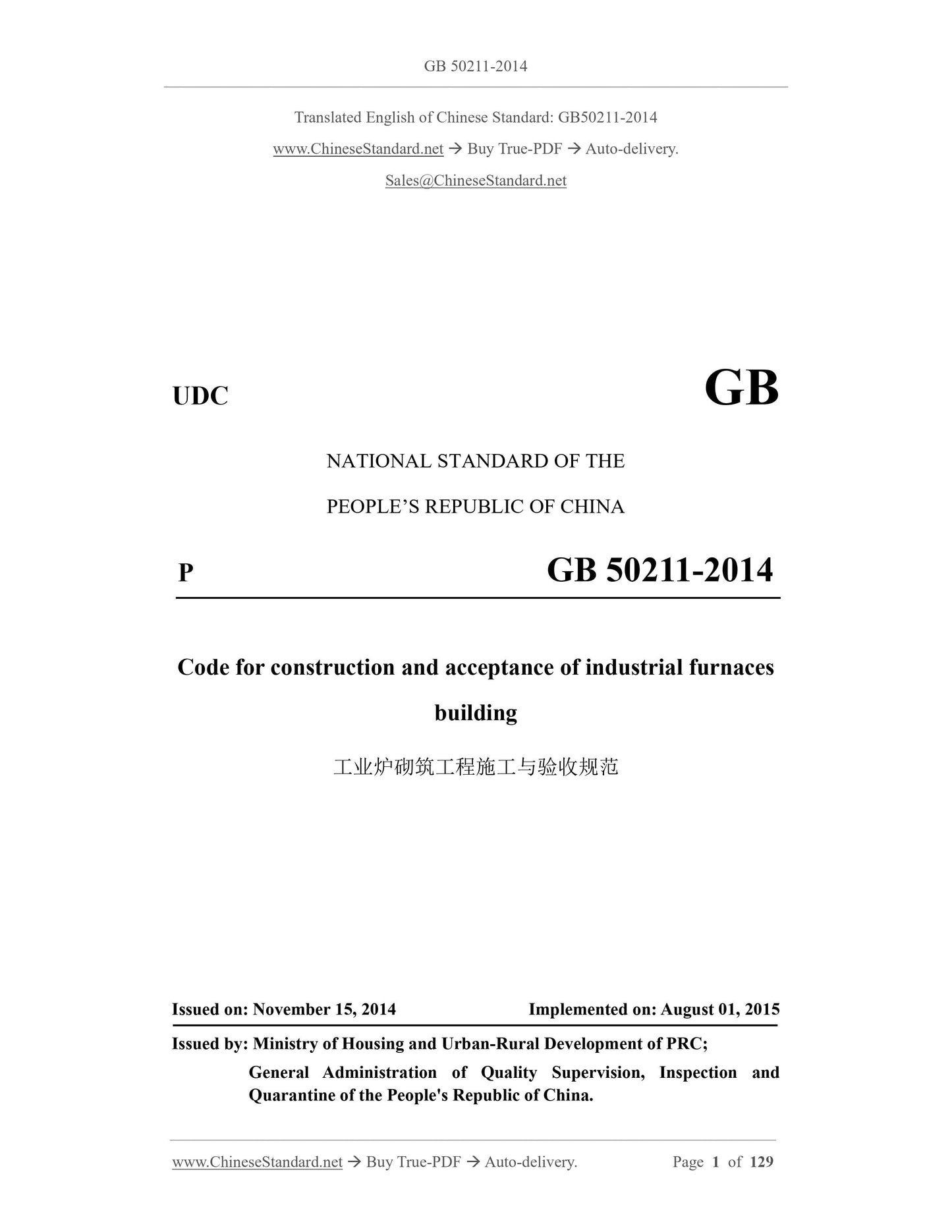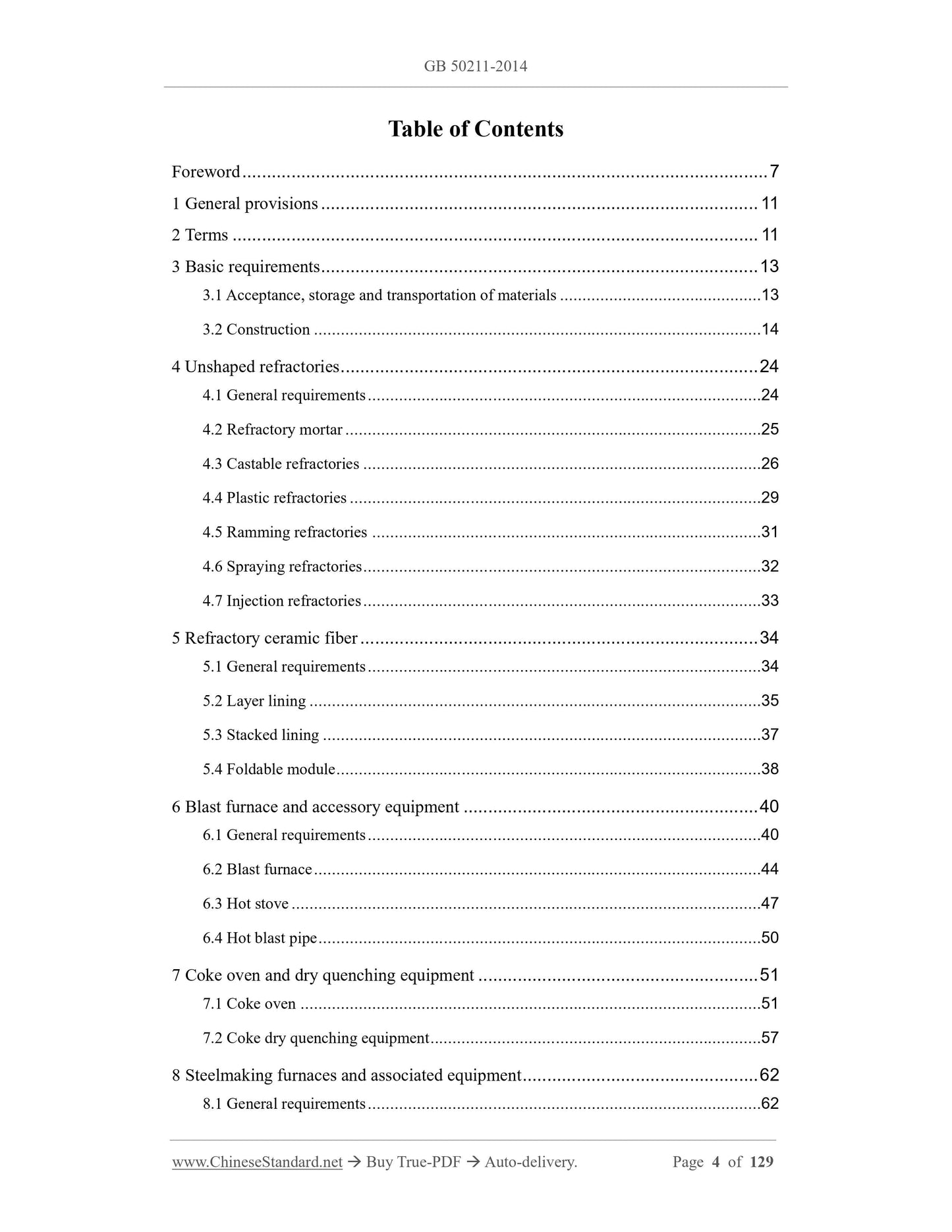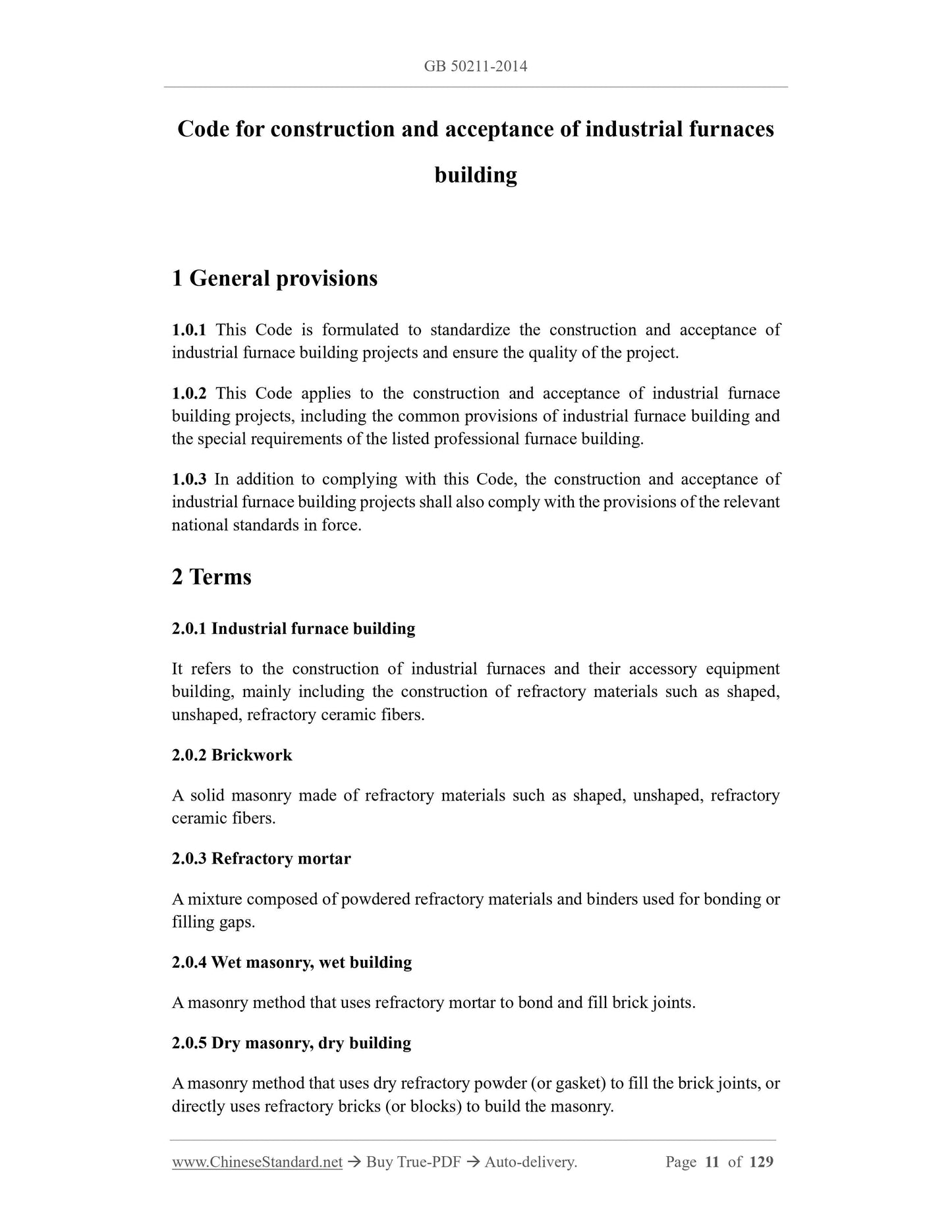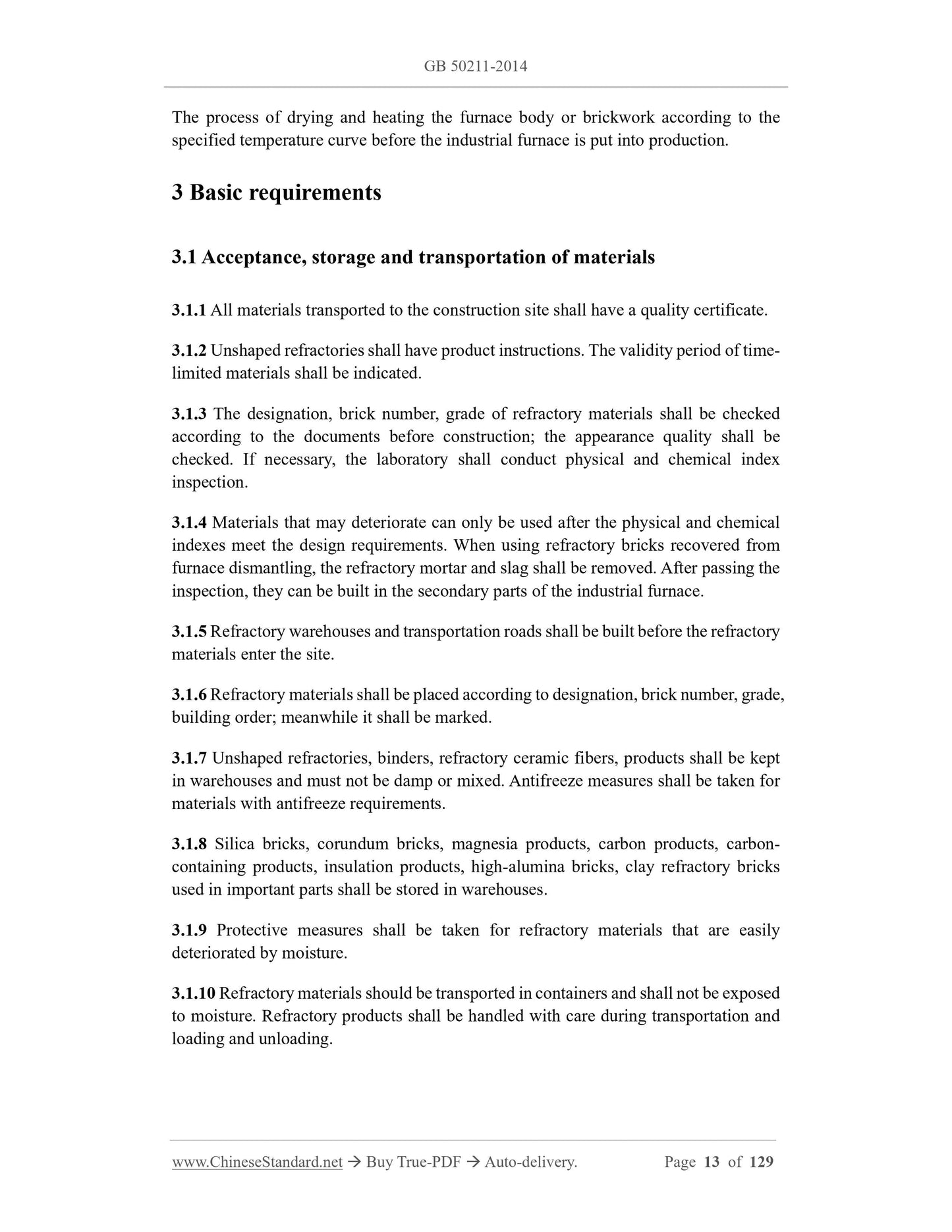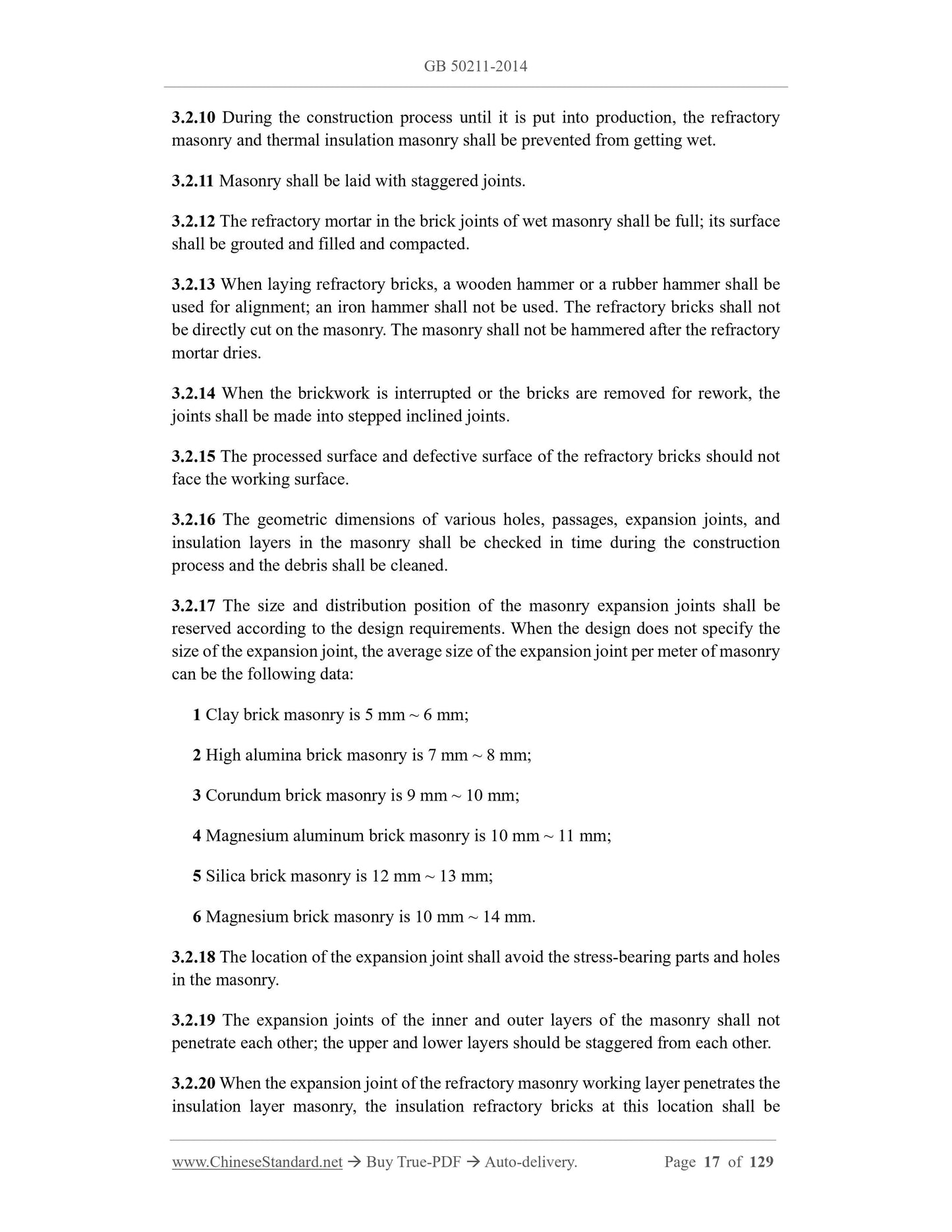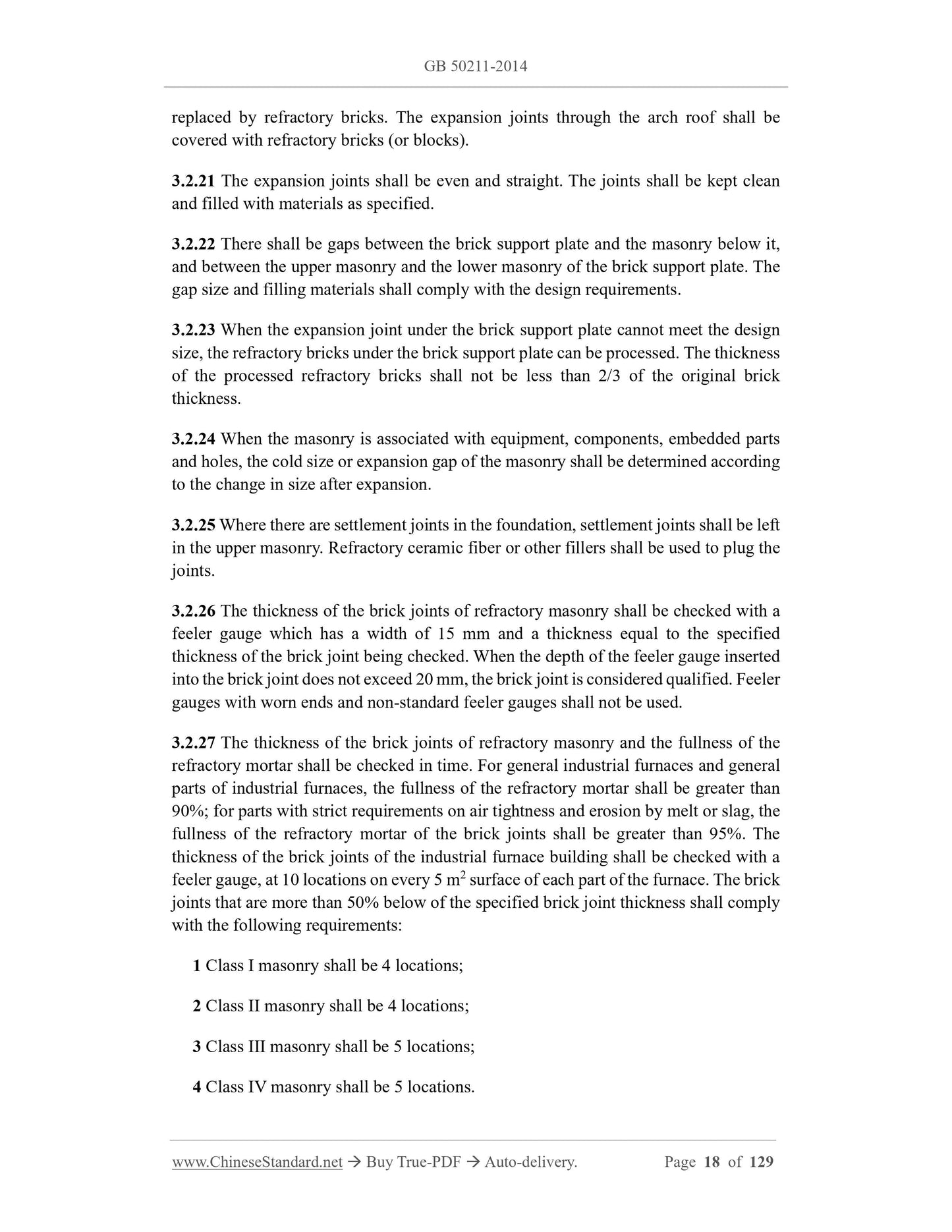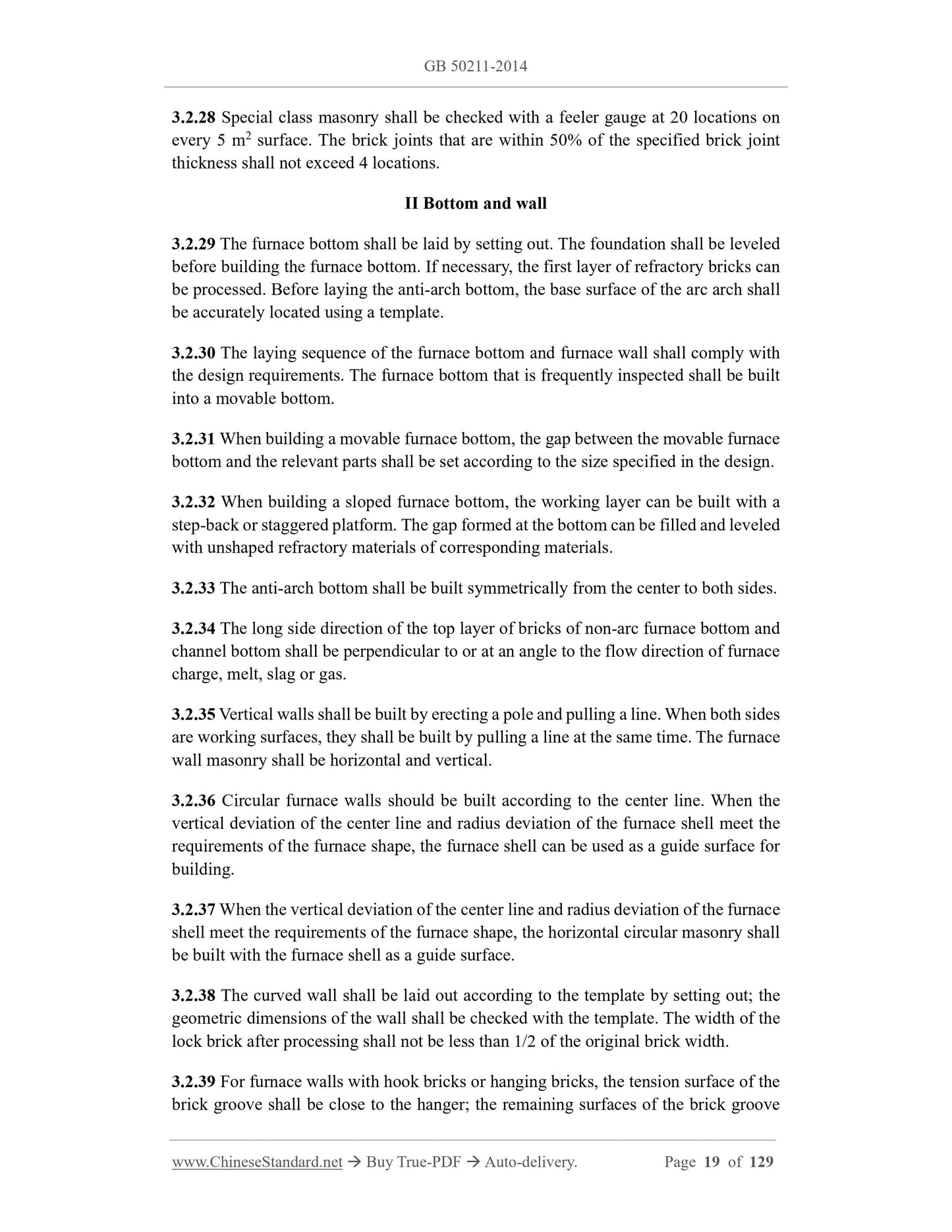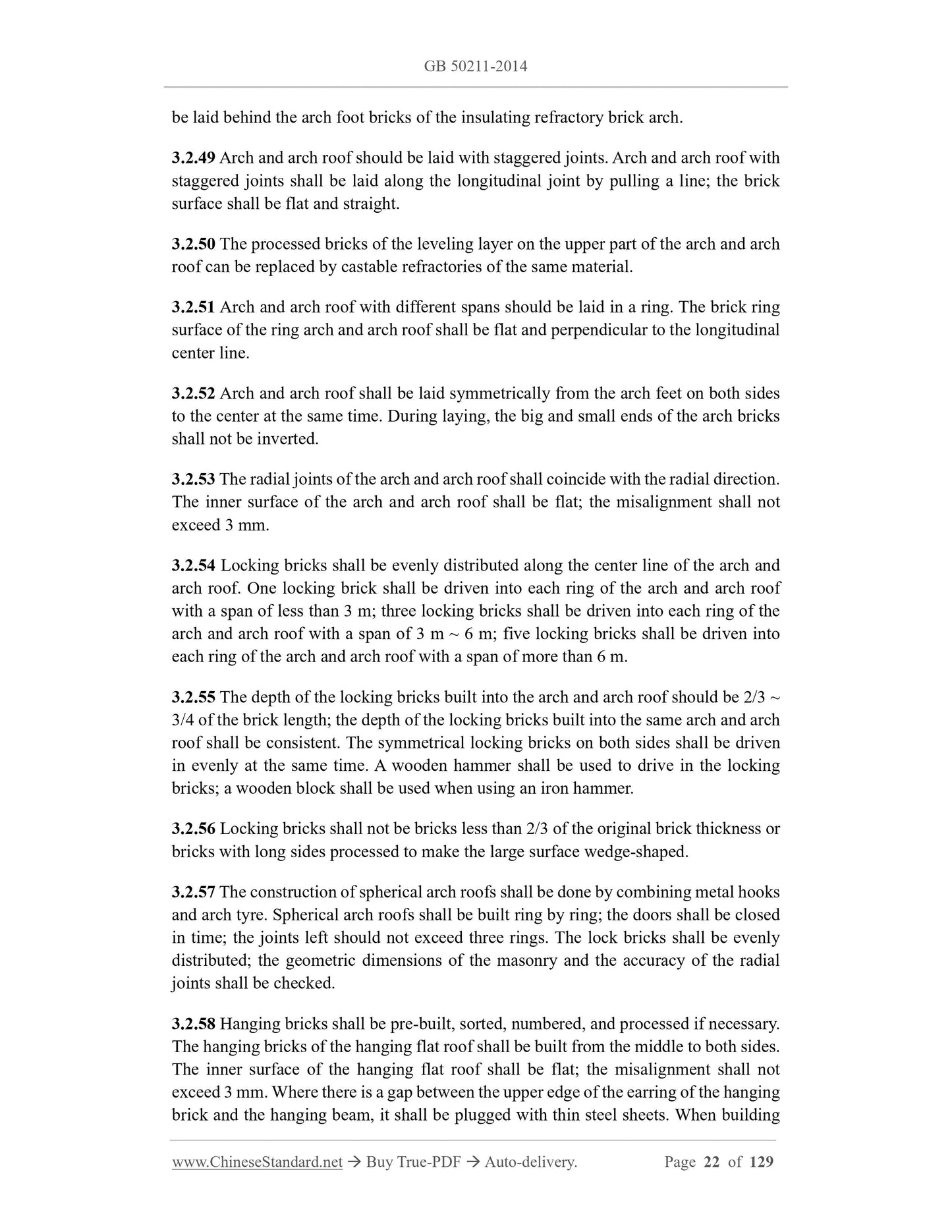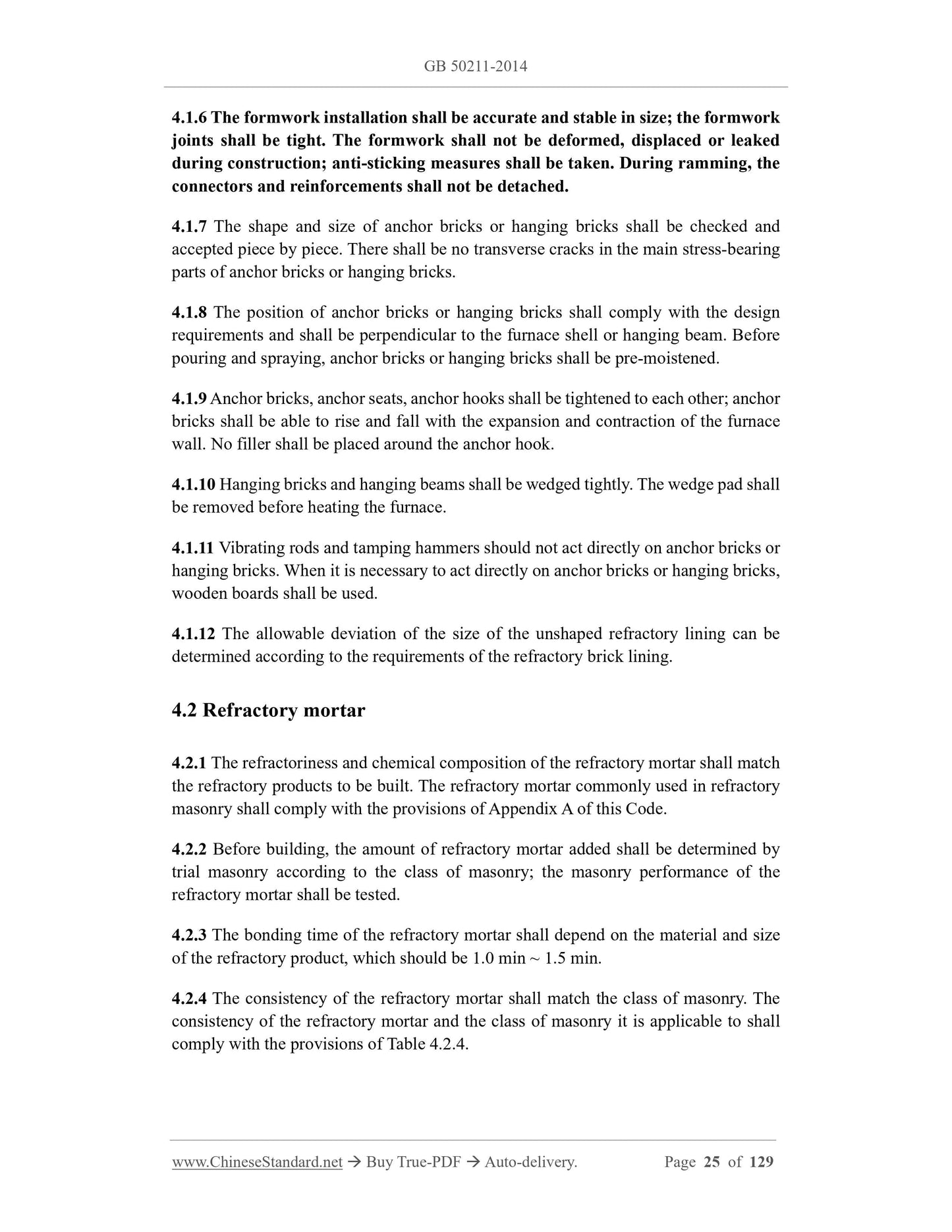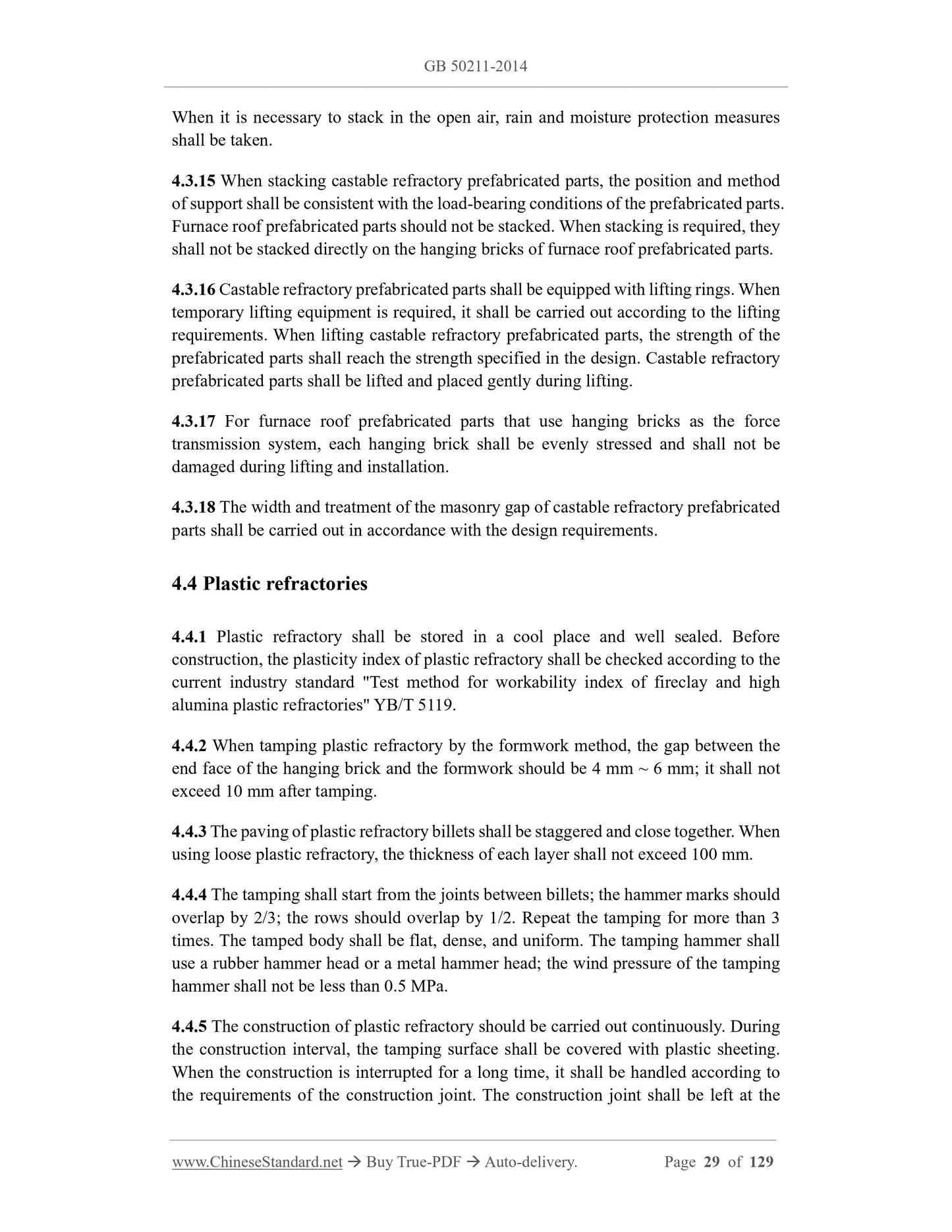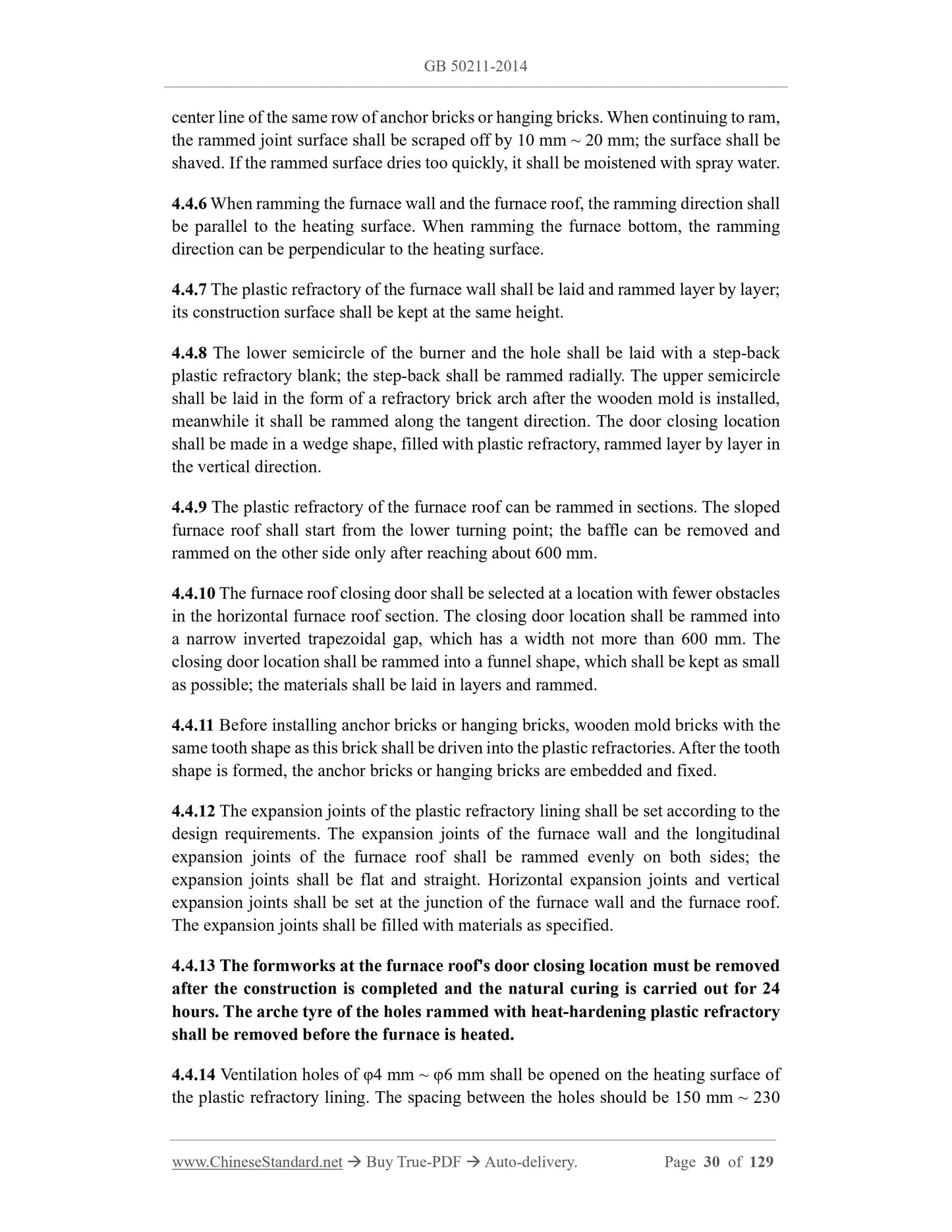1
/
of
12
www.ChineseStandard.us -- Field Test Asia Pte. Ltd.
GB 50211-2014 English PDF
GB 50211-2014 English PDF
Regular price
$2,605.00
Regular price
Sale price
$2,605.00
Unit price
/
per
Shipping calculated at checkout.
Couldn't load pickup availability
GB 50211-2014: Code for construction and acceptance of industrial furnaces building
Delivery: 9 seconds. Download (and Email) true-PDF + Invoice.Get Quotation: Click GB 50211-2014 (Self-service in 1-minute)
Newer / historical versions: GB 50211-2014
Preview True-PDF
Scope
1.0.1 This Code is formulated to standardize the construction and acceptance ofindustrial furnace building projects and ensure the quality of the project.
1.0.2 This Code applies to the construction and acceptance of industrial furnace
building projects, including the common provisions of industrial furnace building and
the special requirements of the listed professional furnace building.
1.0.3 In addition to complying with this Code, the construction and acceptance of
industrial furnace building projects shall also comply with the provisions of the relevant
national standards in force.
Basic Data
| Standard ID | GB 50211-2014 (GB50211-2014) |
| Description (Translated English) | Code for construction and acceptance of industrial furnaces building |
| Sector / Industry | National Standard |
| Classification of Chinese Standard | P24 |
| Classification of International Standard | 91.080.30 |
| Word Count Estimation | 137,161 |
| Date of Issue | 12/2/2014 |
| Date of Implementation | 8/1/2015 |
| Older Standard (superseded by this standard) | GB 50211-2004 |
| Quoted Standard | GB/T 2994; GB/T 7320; GB/T 8923; GB/T 14982; GB/T 22459.1; GB/T 22459.3; YB/T 114; YB/T 121; YB/T 384; YB/T 5009; YB/T 5016; YB/T 5119 |
| Regulation (derived from) | Housing and Urban-Rural Development Ministry Bulletin No. 659 |
| Issuing agency(ies) | Ministry of Housing and Urban-Rural Development of the People's Republic of China; General Administration of Quality Supervision, Inspection and Quarantine of the People's Republic of China |
| Summary | This standard applies to construction and acceptance of industrial furnaces building, including the common provisions of the special requirements of industrial furnaces building and set professional masonry stove. |
Share
